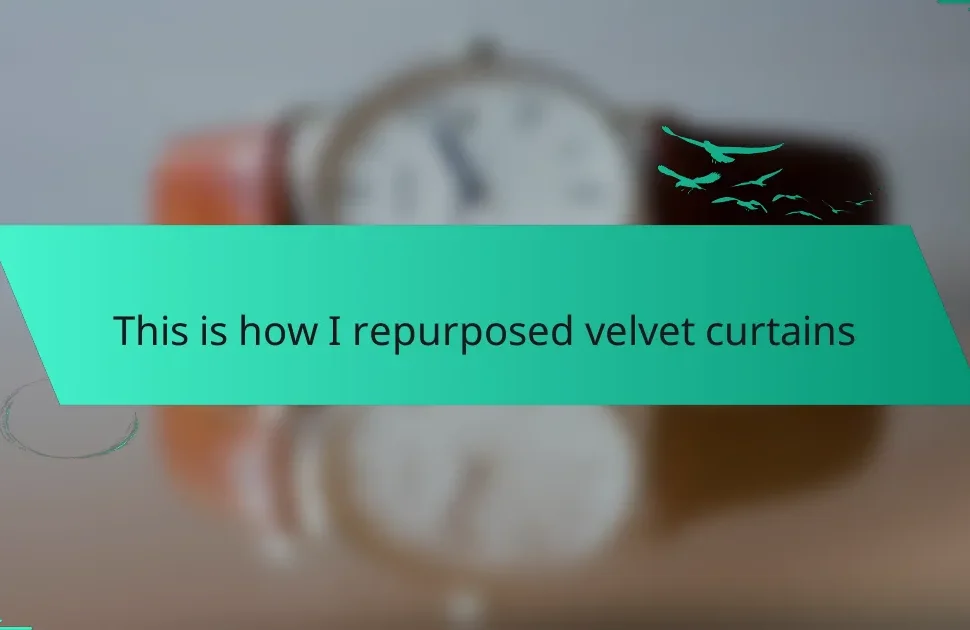Key takeaways
- Vintage fashion celebrates sustainability, unique style, and craftsmanship, offering personal expression distinct from contemporary clothing.
- Japanese silk is renowned for its luxurious feel, rich heritage, and cultural significance, making it a valuable addition to vintage wardrobes.
- When sourcing vintage silk, explore thrift stores, online platforms, and local boutiques to find unique pieces with stories.
- Styling vintage silk involves careful layering, accessorizing, and proper care techniques to maintain the fabric’s beauty and longevity.

Introduction to vintage fashion
Vintage fashion holds a special charm that transcends time, drawing people into a world where each piece tells a story. My journey into vintage began with a simple curiosity sparked by an old dress I found at a thrift store, which led me to discover the elegance of fabrics like Japanese silk. I remember the moment I first touched that soft, lustrous material; it felt like a glimpse into history and craftsmanship that is often lost in today’s fast-fashion culture.
Embracing vintage fashion is not just about wearing old clothes but about celebrating the artistry and individuality imbued in each piece. The thrill of finding unique items allows for personal expression that contemporary clothing often lacks. Here are a few reasons why I believe vintage fashion is so compelling:
- Sustainability: Buying vintage helps reduce waste and promotes eco-friendly fashion.
- Unique Style: Each vintage item is a one-of-a-kind piece, allowing you to create a distinctive wardrobe.
- Craftsmanship: Many vintage garments, especially those made from materials like Japanese silk, showcase unmatched quality and attention to detail.
- Historical Connection: Wearing vintage connects you to the past, telling stories of fashion and culture that shaped previous generations.
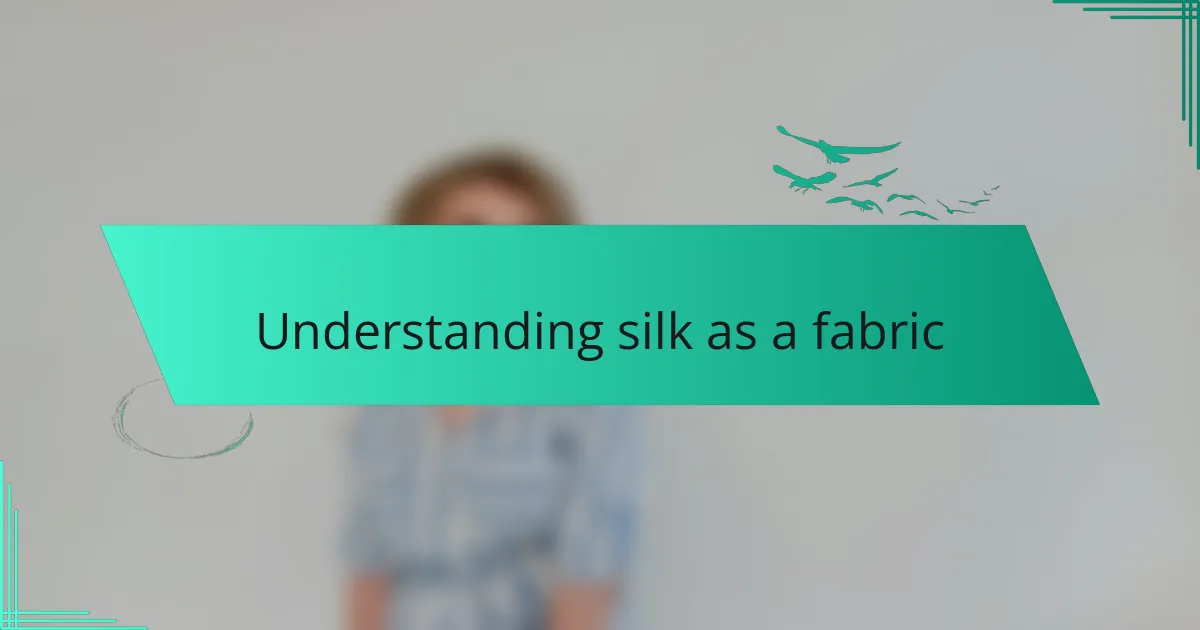
Understanding silk as a fabric
Silk is a truly unique fabric that has captivated me since my first encounter with it years ago. The way it slips through your fingers feels almost magical—smooth and luxurious, yet surprisingly versatile. I still remember the first time I wore a vintage silk scarf; it transformed not only my outfit but my whole mood, making me feel sophisticated and elegant.
When it comes to understanding silk, it’s essential to note the following characteristics:
- Softness: Silk is known for its gentle touch against the skin, which makes it a perfect choice for clothing and accessories.
- Breathability: Unlike many synthetic fabrics, silk allows air to circulate, ensuring comfort even in warmer weather.
- Shine: The natural luster of silk catches the light beautifully, giving garments a stunning visual appeal.
- Durability: While it may seem delicate, silk can be surprisingly strong. With proper care, silk items can last for decades, making them wonderful vintage treasures.
- Dye absorption: Silk holds dye exceptionally well, which is why you’ll find such rich and vibrant colors in vintage silk pieces.
These qualities not only highlight silk’s practicality but also its timeless charm.
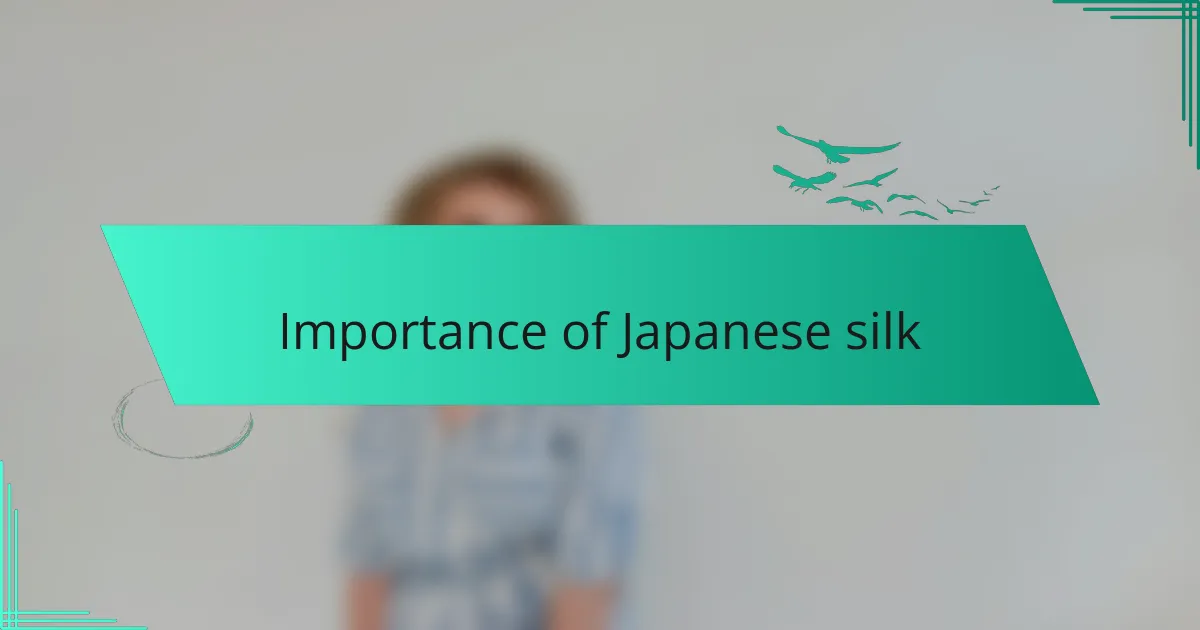
Importance of Japanese silk
Japanese silk holds a significant place in the world of vintage fashion, and I can attest to its unmatched quality and allure. When I first discovered a vintage kimono made of Japanese silk, I was taken aback by the intricate patterns and vibrant colors that seemed to tell a story of artistry and tradition. Have you ever felt a fabric so exquisite that it makes you appreciate the craftsmanship behind it? I certainly did, and it deepened my connection to the piece and the culture it represents.
The importance of Japanese silk lies not just in its luxurious feel, but also in its rich heritage. For centuries, artisans have perfected the craft of silk-making, resulting in fabrics that not only look stunning but also embody a history steeped in cultural significance. Each vintage silk item feels like a tangible link to the past, something that resonates with anyone who cherishes unique pieces.
Moreover, embracing Japanese silk in vintage fashion means celebrating sustainability and mindful consumption. By selecting these beautifully crafted items, you’re not just adding elegance to your wardrobe; you’re supporting a cycle of appreciation for quality over quantity. Doesn’t it feel rewarding to choose pieces that are not only stylish but also ethically sound? That’s the beauty of integrating Japanese silk into your fashion journey.
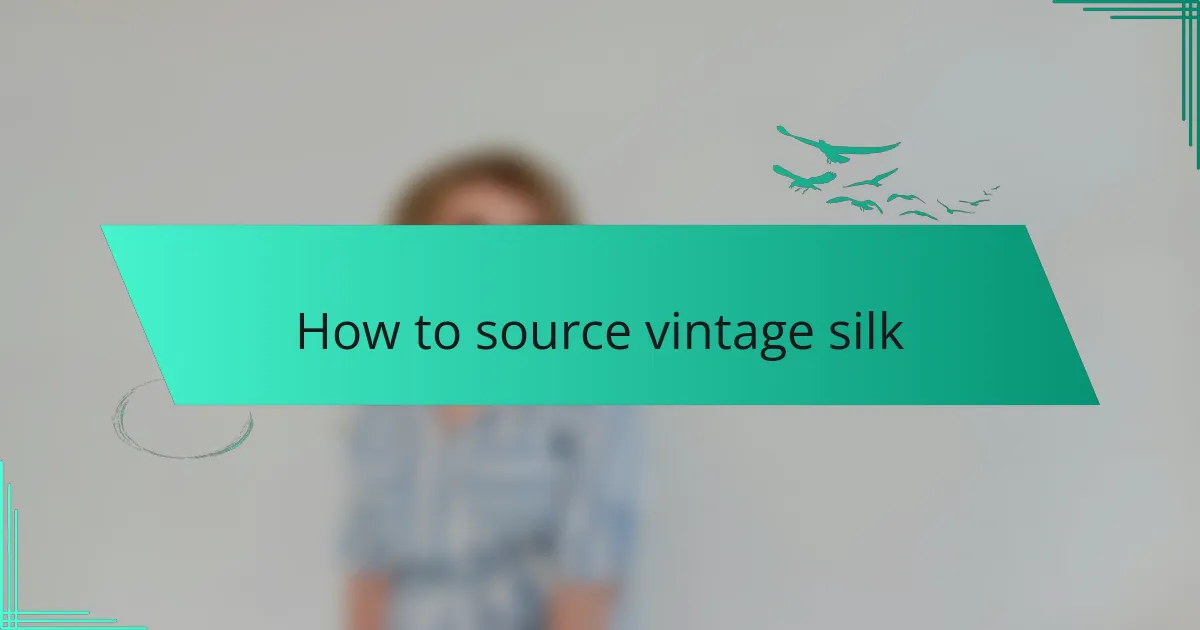
How to source vintage silk
When it comes to sourcing vintage silk, I often find the most delightful treasures in thrift stores, estate sales, and flea markets. There’s a thrill in rummaging through old boxes, hoping to unravel a hidden gem. I remember discovering a beautifully folded silk scarf tucked away in a corner; its vibrant colors practically sang to me. Have you ever had that rush of excitement when you unearth something unique? It’s an unparalleled experience!
Online platforms are also invaluable for finding vintage silk. Websites like Etsy and eBay are gold mines, where you can explore listings from sellers around the globe. I once stumbled upon a stunning obi from Japan that immediately transported me to the vibrant markets of Kyoto, simply through its exquisite pattern. Just remember to read descriptions carefully and check seller ratings, as vintage silk can vary greatly in quality.
Connecting with local vintage boutiques can also enhance your silk-sourcing adventure. These shops often curate collections with rich stories behind each piece. I visited a small boutique once and chatted with the owner, who passionately shared the history of a particular kimono. This personal connection not only deepens your appreciation for the fabric but also enhances the whole shopping experience. So next time you’re on the hunt for vintage silk, consider where you might source that special piece that adds character to your wardrobe.

My journey in DIY projects
Finding my way into DIY projects has been a transformative aspect of my journey with vintage fashion. Initially, it was about the joy of creating something unique, just like the pieces I admired in shops and markets. I recall the excitement of repurposing an old silk scarf into a chic hairband; the thrill of crafting something beautiful from something forgotten felt empowering.
As I delved deeper into these projects, I found myself immersed in the details—the knots, stitches, and color combinations. Each piece told a story, and I often found inspiration by looking at the intricate patterns of Japanese silk I had collected. Have you ever felt that rush of creativity when you see the perfect material? It’s that moment of inspiration that makes the effort so worthwhile.
With every project, my skills improved and so did my passion for vintage textiles. I began embracing not just the end product, but the process itself. I remember a time when I struggled with sewing a vintage kimono into a modern jacket but persevered because the fabric was too beautiful to give up. That mix of frustration and reward taught me the value of patience in my craft. Isn’t it incredible how much we can learn about ourselves through DIY?

Techniques for working with silk
Working with silk requires a gentle approach due to its delicate nature. I remember the first time I tried to sew with it—frustration quickly turned to joy as I adjusted my techniques. To prevent slipping and ensure neat seams, I found that using a fine needle and lightweight thread makes a world of difference.
Here are some techniques I’ve learned along the way:
- Use a sharp, fine needle: This helps avoid snagging the fibers.
- Choose lightweight thread: Opt for silk or cotton threads for flexibility and reduced bulk.
- Pin carefully: Use silk pins or clips, as traditional pins can leave marks on this fabric.
- Baste first: I always baste my seams as a trial to keep everything in place without permanent alterations.
- Press with caution: Use a low heat setting and a pressing cloth to prevent scorching and shine.
Incorporating these methods has transformed my experience with silk, making projects more enjoyable and results more stunning.
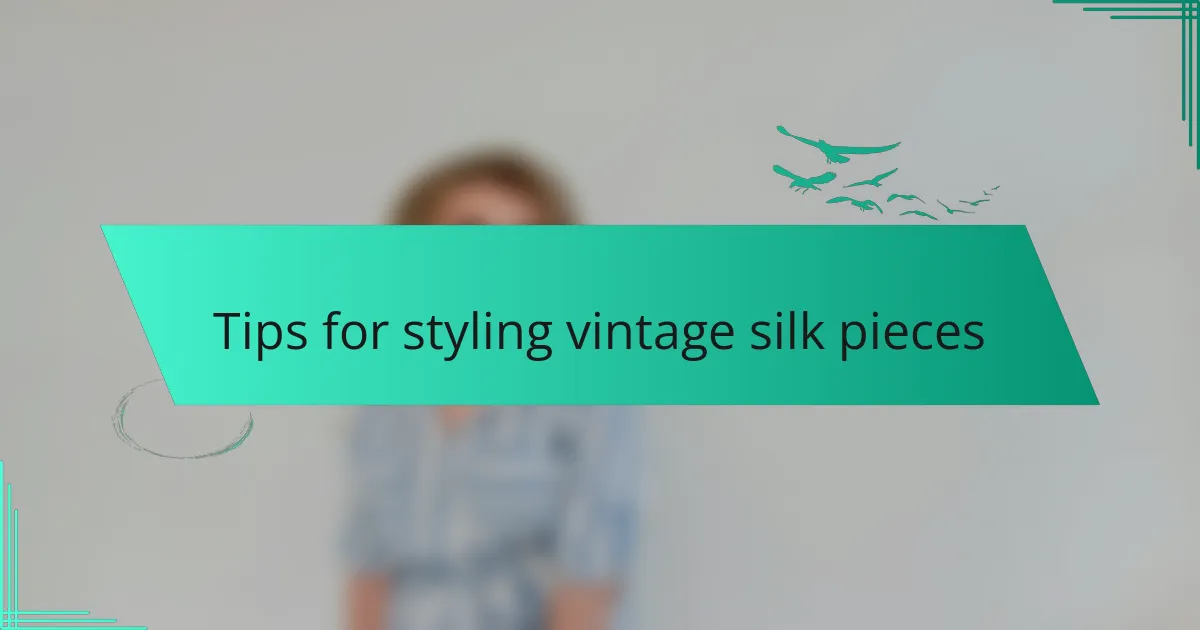
Tips for styling vintage silk pieces
Styling vintage silk pieces can be a delightful experience, blending the elegance of the fabric with your personal flair. One of the simplest ways to elevate a silk garment is by layering. I often pair a vintage silk blouse with a tailored blazer, which not only adds structure but also allows the soft, flowing nature of the silk to contrast beautifully with the sharp lines of the jacket. Have you ever noticed how a single layer can completely transform an outfit? It’s like painting a canvas—each stroke adds depth and personality.
Accessorizing can also make a huge impact when styling silk. I love incorporating chunky jewelry or a statement belt with my vintage silk dresses; it adds an unexpected twist that breathes new life into the piece. I remember wearing a vibrant silk maxi dress with a bold gemstone necklace, and it felt like the outfit transcended time. Isn’t it interesting how a thoughtful accessory can amplify not just the look but the whole mood of your ensemble?
Don’t forget about how to care for silk when styling it! I always ensure my silk pieces are clean and wrinkle-free before heading out. A simple technique I use is steaming instead of ironing to maintain that luxurious sheen without risking damage. After all, the way we treat these vintage treasures reflects our respect for their history and craftsmanship. What’s better than wearing a piece that feels fresh and vibrant while also carrying a rich story?


